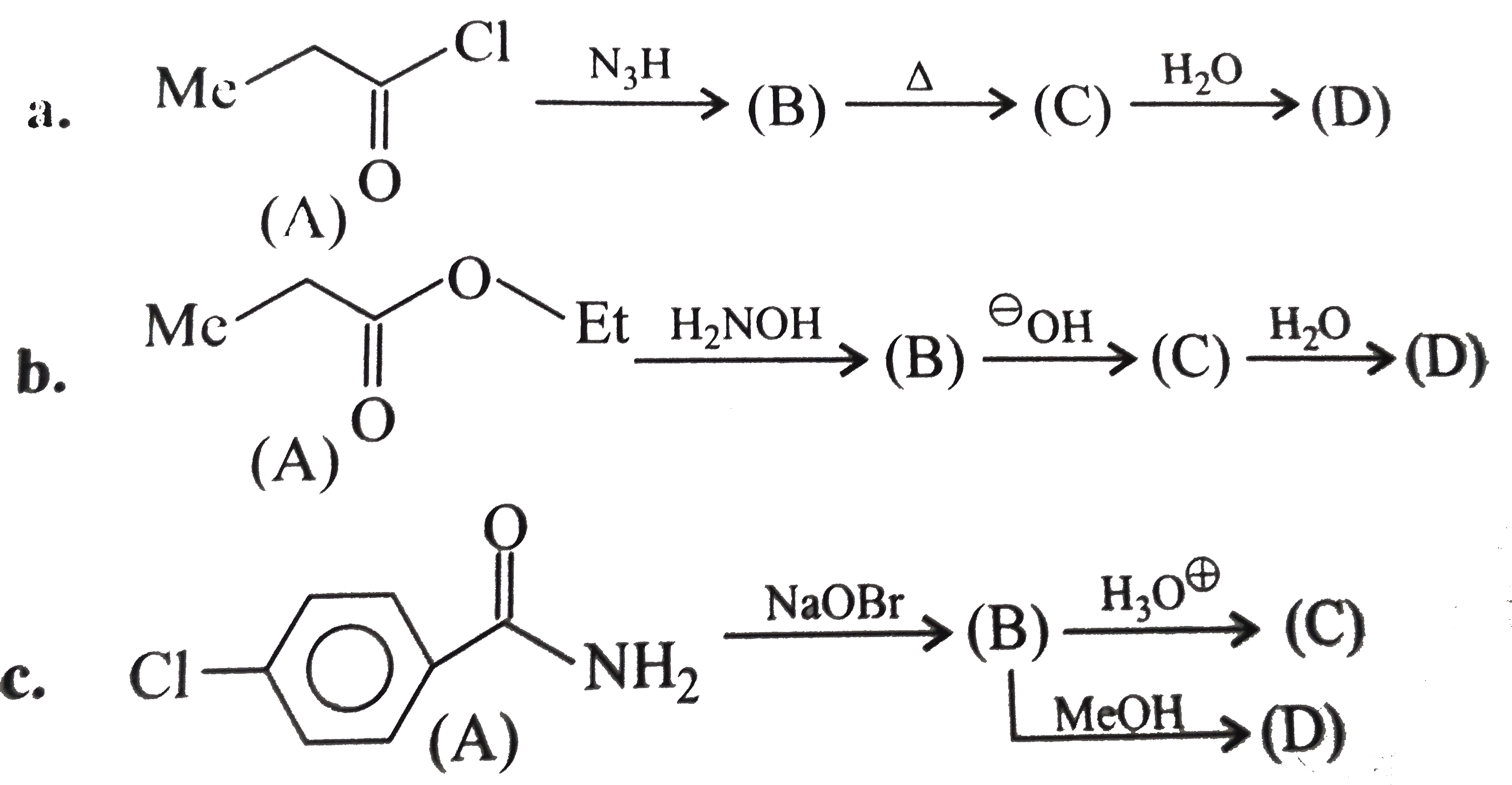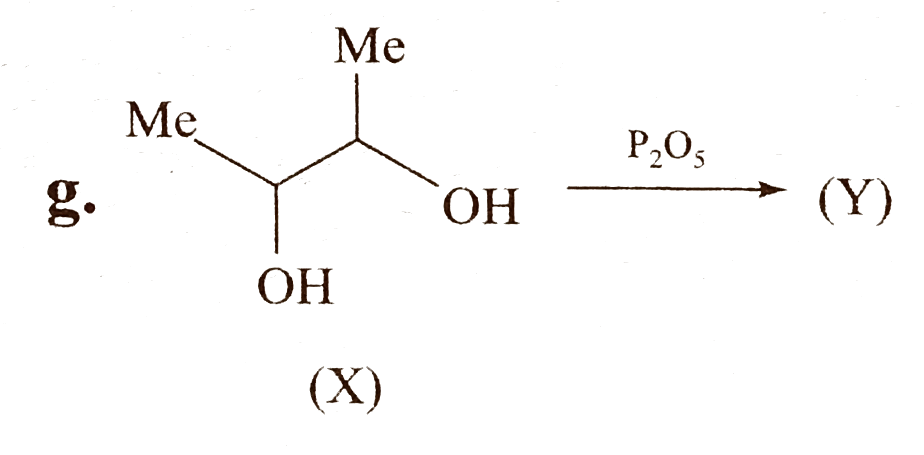Complete the following reactions.
(i) 
(ii) 
(ii) 
(vi) β−D−Glucofuranose(J)−−−−−−−→Acetone/H⊕(K)
Acetone forms a cyclic ketal called an acetonide with two cis (OH) groups D−Glucopyranose is in equilibrium with some D−glucofuranose (having two pairs of cis OH groups). The formation of diketal shifts the equilibrium towards the reacting D−glucofuranose.
(i) 
(ii) 
(ii) 
(vi) 
Topper's Solved these Questions
- BIOMOLECULESBOOK - CENGAGE CHEMISTRYCHAPTER - BIOMOLECULESEXERCISE - Exercises (Concept Application)
25 Videos
- BIOMOLECULESBOOK - CENGAGE CHEMISTRYCHAPTER - BIOMOLECULESEXERCISE - Exercises (Linked Comprehension)
38 Videos
- BIOMOLECULESBOOK - CENGAGE CHEMISTRYCHAPTER - BIOMOLECULESEXERCISE - Exercises Archives (Analytical And Descriptive)
8 Videos
- AROMATIC COMPOUNDS AND ALKYL AND ARYL HALIDES BOOK - CENGAGE CHEMISTRYCHAPTER - AROMATIC COMPOUNDS AND ALKYL AND ARYL HALIDES EXERCISE - Archives Subjective
18 Videos
- BIOMOLECULES, POLYMERS AND CHEMISTRY IN EVERYDAY LIFEBOOK - CENGAGE CHEMISTRYCHAPTER - BIOMOLECULES, POLYMERS AND CHEMISTRY IN EVERYDAY LIFEEXERCISE - QUESTION BANK
8 Videos
Similar Questions
Complete the following reaction:
(i) Cl2+H2O→
(ii) XeF6+3H2O→
View SolutionComplete the following reaction :
(a)
(b)
( c)
(d)
( e)
(f) PhCHON3H/H⊕−−−−−→Δ(B)H3O⊕−−−→(C)+(D)
(g)
View SolutionComplete the following reactions
(i) O2−2+H2O→ (ii) O−2+H2O→
View SolutionComplete the following reactions :
a.
b.
c.
d.
e.
f.
g. ltbr h.
ltbr h. 
i.
j.
k.CH2=C=CH2(A)KNH2−−−−→orC2H5ONa+C2H5OH(B)
View SolutionComplete the following reactions :
(a)
(b)
(d) PhCl(G)+Mg+CO2H2O−−→(H)
(f) trans-4-Chloro(N) methyl cyclohexane +Mg+CO2H2O−−→(O)
(g)
(h) RMgBr(U)+CO2Ether,Δ−−−−−→H2IValericacid(V).
(i) RMgBr(W)+CO2Ether,Δ−−−−−→H2OCaproicacid(X).
View SolutionI. Synthesies the anti-oxidant food preservatives:
a.
b.
II. Complete the following reactions:
a.
b.
c. n mol of (C) + n mol of (F) → (G) (polymer)
d. PhOH(A) + 3CH2(B)=O H⊕−−→ (C) H2/Ni−−−−−−→Δ,pressure (D)
e.
View SolutionComplete the following reactions:


d. Propane nitrile(N)(i)PhMgBr−−−−−−−−−→(ii)H3O⊕(O)Zn−Hg−−−−−−−→HCl(P)
View SolutionComplete the following reactions:
(i) CH3−CH2−O−CH3| C | CH3−CH3−HIHeat−−→
View SolutionComplete the following reactions
a. PhNH2(A)HNO2−−−→0.5∘C(B)−−−−→DH2PO2(C)
b.
c. PhCH(A)=O+HCN(B)→(C)LAH−−→D
d. PhCH=O(A)+MeNO2(B)ΘOH−−→Fe,FeSO4−−−−−−→H⊕D
e.
View SolutionComplete the following reactions:
(i) CH3−CH3∣C∣Cl−CH2CH3alcKOH−−−−→ΔAO3−−−−−→Zn/H2O(B+C)
(ii) CH3ICH−CH3alcKCN−−−−→A(i)SnCl2/HCl−−−−−−−−−−−−→(ii)H2O.OH.H2O2B
(iii) HCNHCl/AlCl3−−−−−−→A(i)C6H6Δ−−−−−−−−−−→(ii)(H2O)/H−B
(iv)
View Solution
